Dear Washington State Liquor Control Board (WSLCB): November 12, 2013
Please accept the following as my contribution to public comments concerning the DRAFT recommendations to the legislature of the Medical Marijuana Working Group, constituted by representatives from the WSLCB, the Department of Revenue (DOR), and the Department of Health (DOH), and presented by the WSLCB on October 21, 2013. Our Washington State nonprofit organization, the Center for the Study of Cannabis and Social Policy, is dedicated to the promotion of reality-based cannabis policies, significantly made possible by the legalization of cannabis under Initiative 502. We are concerned that these draft recommendations are based more in the production of political theater than in the realities of currently existing patient access, on the one hand, and a lack of understanding about Washington State cannabis markets on the other. We do, however, understand that the legislature is responding to an absence of regulatory frameworks around medical cannabis, and that there is a compelling need to do so. We propose a simple, pragmatic two-step solution that would minimize cost to taxpayers and preserve patient access, while hardly affecting potential state revenues. We propose that the legislature re-visit a bill they already approved, but was then substantively section-vetoed by the governor’s office in 2011. And we propose that the state establish a scientific commission to study the realities of patient access to medical cannabis.
The perceived lack of medical cannabis regulation in Washington State is the direct result of former Governor Christine Gregoire’s 2011 section veto of key regulatory provisions in 69.51A.045. This is illustrated by the following quote from a Seattle Times article dated April 29, 2011:
The governor took a combative posture in vetoing most of the bill, which would have licensed and regulated medical-marijuana dispensaries and grow operations, and given patients broader arrest protection … Recent letters from U.S. Attorneys around the country, including Washington’s two federal prosecutors, threatening more aggressive action against medical-marijuana programs and state workers enforcing them show a “changed landscape,” she said.
That logic, that explicit regulation might expose state employees to Federal sanction, was rendered irrelevant by U.S. Attorney General Cole’s Department of Justice memo dated August 29, 2013 (“Cole 2”). As you well know, the Cole 2 memo explicitly states that as long as state regulatory frameworks meet eight conditions, the Federal government will allow state experiments with legalization. There is nothing in the memo that bans state medical marijuana regulation, as long as those regulations are clear, substantive, and do not violate any of the eight conditions. Washington State’s absence of clear regulatory frameworks for medical marijuana is clearly the result of Gregoire’s 2011 section vetoes. If they had not happened, Washington State would be in Colorado’s position and there would be no need for your Working Group’s recommendations.
Therefore, the WSLCB should recommend a clear course of action to the legislature: establish a commission to study what was vetoed; modify to reflect the current landscape; and re-submit for executive signature, given the opening created by Cole 2.
I-502 said nothing about medical cannabis when the voters passed it, and it is a perversion of public initiative process for the state legislature, or any public stakeholder including the governor’s office and the Department of Revenue, to use it to dismantle the existing system of patient access. The WSLCB was tasked with creating a workable legal system, not with destroying what is currently working for patient access. Despite the Working Groups’ affirmation that patients now have a safe, legal alternative, the fact is that not one license has been given and the legal market will have a lot of kinks to work out. No honest stakeholder disputes this. It should be given space to work out these kinks without dragging patient access into the messiness. Any recommendation that is based on asserting the viability of something that does not exist, has never been attempted, and/or is an optimistic projection, cannot be put forward to the legislature as a foundation for sound policy making.
As a result: each recommendation for which I-502 does not explicitly have a correlating mandate (designated “N/A” in the recommendations) should be withdrawn or amended to explicitly mandate credible, substantive studies of their potential effects on patients and patient access before being revisited at a later date. That includes Section 2, establishing a mandatory patient registry; 3, regulations regarding health care professionals; and 4, eliminate collective gardens. Sections 1, 5, and 6 are also problematic, but given the severity of our organization’s recommendation to completely eliminate sections 2, 3, and 4, our comments will focus on these.
We assert that the central problem with the Working Group’s competence and credibility is that it is comprised of state agencies with zero expertise in medical cannabis. The secondary problems are corollaries: the DOR has no expertise in how licit cannabis markets are affected by quasi-licit medical markets and illicit markets that constitute the main competitors to legal cannabis markets; the DOH has no expertise in medical cannabis; and the LCB’s recently acquired field of knowledge is bounded by licit market regulation, not medical market regulation. The problem is a profound lack of formal knowledge, in the absence of which politics rule the day over common sense.
The DOR bases its precise calculations on BOTEC’s work. The acronym “BOTEC” stands for “back of the envelope calculations.” Another acronym would have worked: SWAG, for scientific wild-ass guess. The state’s contractor’s numbers are precise but accuracy is not the same as precision, and those numbers are suspect for a number of reasons but most of all, because BOTEC was mostly an outsider organization with no prior knowledge of Washington cannabis markets, much less knowledge about medical cannabis markets in the big picture, which includes a much more significant illicit cannabis markets. BOTEC did come to the realization that medical markets are a tiny fraction of the overall cannabis markets in Washington State, relative to illicit markets. This should mean, to you and to the legislature, that the State does not have a substantive economic interest in protecting licit state cannabis markets from quasi-licit medical cannabis markets, and that expensive and detailed regulation can only cost more than it would save. It makes no economic sense, and the only way to explain this obsession is that it makes political capital for certain stakeholders.
This applies especially to the recommendation to ban “collective gardens,” which are quite different from commercial store fronts. The true collective garden can be identified by its social relations of production: I recommend that the Working Group read a book titled “Dying to Get High, Dr. Wendy Chapkiss’ outstanding ethnography of the Wo/man’s Alliance for Medical Marijuana. Patient participation in collective gardens can be important as cannabis consumption when it comes to palliative care. Banning collective gardens hurts existing and potential patient access, and is therefore a human rights violation. There is no reason, at all, to believe that collective gardens pose any sort of threat to the as-yet nonexistent legal cannabis market, because they are completely different from commercial relations of production. If the recommendation to ban collective gardens comes from an urge to ban storefront dispensaries, an alternative might be to ban commercial storefronts. But if these are illegal anyway, as US attorney Jenny Durkan has asserted, then the recommendation should be to enforce existing law. There is no need to create additional regulatory work for which taxpayers would foot the bill without receiving any social benefits. This can only be about political theater, and I urge you to refrain from participating.
The DOH, in these recommendations, would be tasked with overseeing doctor-patient relationships in a manner that deviates substantially from current regulations regarding the sanctity of the doctor-patient relationship. We note that if the legislature is concerned about fraudulent authorizations, then that is an indication that the DOH is not doing its job or that what is being recommended is a system of physician oversight for which there is no licit precedent. If the DOH is not currently applying the regulatory power it does have, how can it be expected to fulfill the oversight function for which it has been recommended? Also of great concern is the absence of any expertise regarding medical cannabis in the DOH itself – how is a licit bureaucracy going to know more about a field of medicine that is only now opening up, where research is advancing at a rapid rate, and due to its illicit nature the people who know the most about cannabis as an herbal medicine are the patients themselves; and brave health care workers who have treated patients despite legal risks, because public health should not be sacrificed to political policy.
Finally, the LCB itself. With the exception of the secrecy around this working group, the LCB has done a terrific job seeking and listening to public input. You have learned much in the last 11 months or so, but your learning has been focused – rightly – on how to write rules for implementing a legal cannabis market. This is what the voters asked you to do, and it is not your fault that the legislature made this extra request. It seems to me that most of you in the LCB have wanted nothing to do with this, and this is reflected by the dominance of one stakeholder in these recommendations: the Department of Revenue. But I ask you to take what you have learned in the last eleven months and tell the legislature the truth: all recommendations that might impact a single patient’s access to cannabis as medicine have to be studied at length before being made, much less implemented. The problematic assumption that many medical cannabis patients game the system has to be compared with the totally unproblematic assumption that many real patients exist and they should not be sacrificed on the twin altars of politics and revenue. The WSLCB knows this because it has met those patients, heard from them, at public hearings across the state. That is only half the picture, however: the WSLCB has not, to my knowledge, made a systematic effort to listen to clinical researchers, physicians, and naturopaths regarding the study of cannabis as medicine. And why would you? You were not tasked or funded to do so.
In sum, the Center for the Study of Cannabis and Social Policy asserts that Washington State public health policy would be adversely affected by the Working Group’s recommendations as they now stand. Further, there is no social benefit that would be created that could offset the fact that these recommendations constitute bad public health policy. Legal cannabis policy must be constructed to work with with other kinds of social policy, grounded in reality rather than fearful political maneuvering. It should not create new problems that are totally unnecessary and counterproductive in the long term. We are committed to making legal cannabis work, and convinced that Washington State has a historic opportunity to serve as a positive model for making things work instead of making a mess that other states and even nations would look at as a cautionary tale.
Thank you Dr. Dominic Corva Executive Director Center for the Study of Cannabis and Social Policy
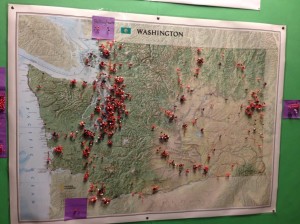
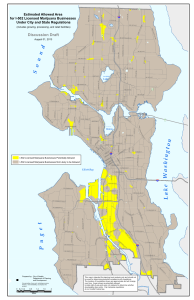
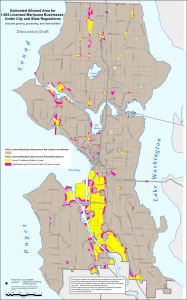

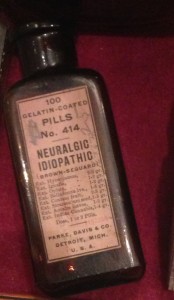
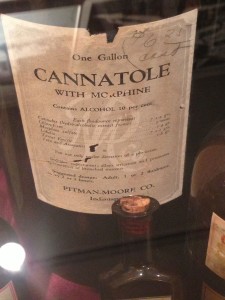 chemically-based medicine. However, cannabis in inhaled and oral forms has been subjected to rigorous large RCTs for specific indications such as pain and spasm and has prevailed. There are adequate records to show that humans have known which plants are toxic and deadly, and which are helpful and healing by trial and error over centuries. Plants and human beings are biologically too intertwined for solely viewing their relationship through the impoverished current models that were designed for single agents and a more reductionistic approach to medical treatment and healing.
chemically-based medicine. However, cannabis in inhaled and oral forms has been subjected to rigorous large RCTs for specific indications such as pain and spasm and has prevailed. There are adequate records to show that humans have known which plants are toxic and deadly, and which are helpful and healing by trial and error over centuries. Plants and human beings are biologically too intertwined for solely viewing their relationship through the impoverished current models that were designed for single agents and a more reductionistic approach to medical treatment and healing.
